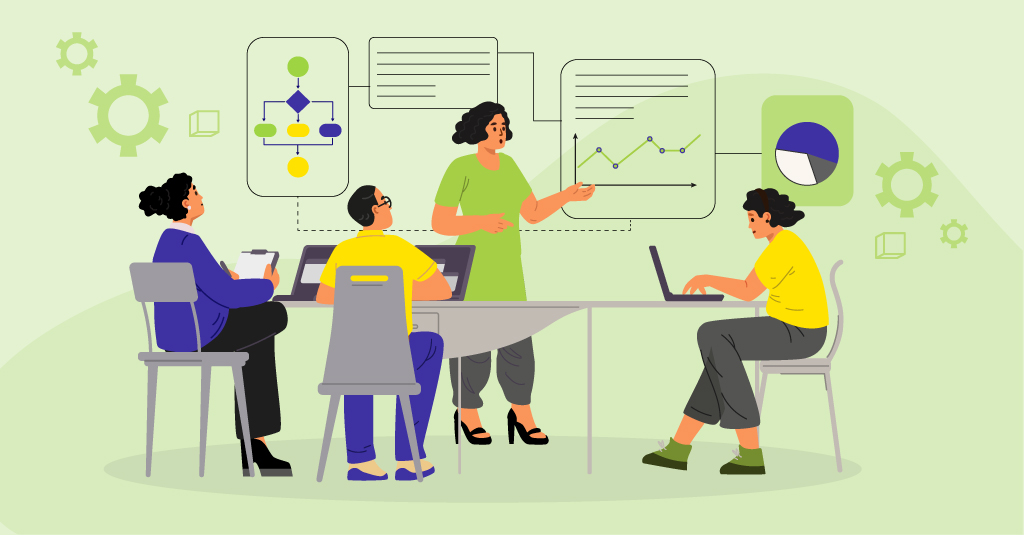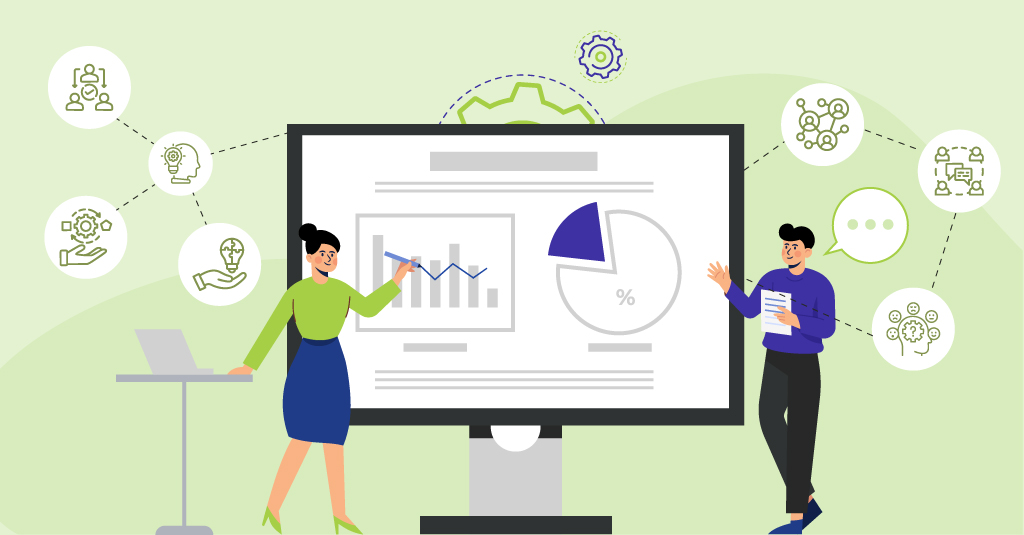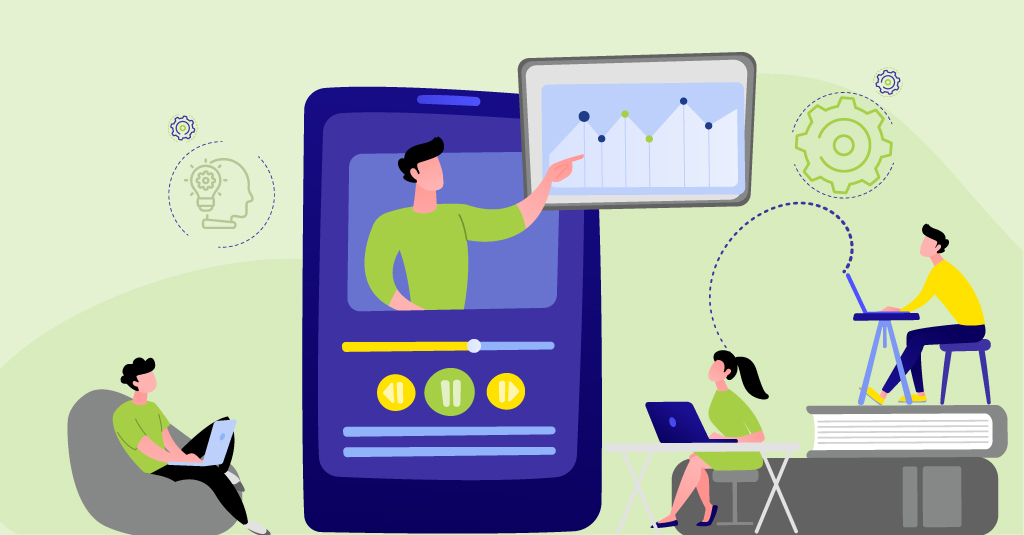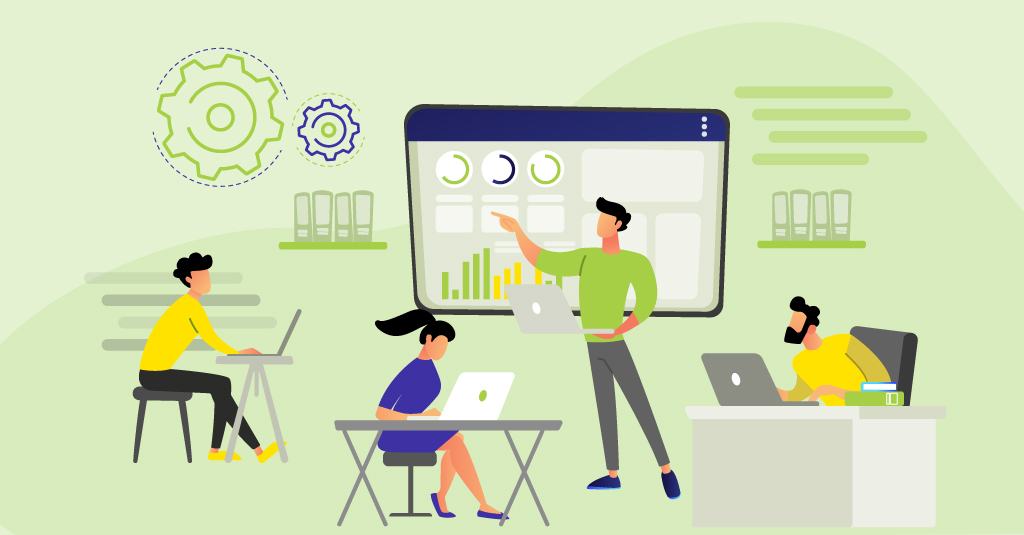As 2025 closes, 68% of enterprise learning platforms report active use of AI-led authoring or adaptive design tools, which is a sharp rise from 41% in early 2024, according to the CLO Digital Learning Index 2025.
Audit coverage, however, has not expanded in parallel; only 17% of large organizations maintain validation protocols for AI-generated logic or content updates. The imbalance reflects where resources are moving. Spending on AI-enabled instructional systems has risen 52% year over year, while investment in human design review has fallen by nearly one-third, reducing the ability to evaluate what these systems now produce.
The outcome is structural. AI has moved beyond supporting production to defining how learning is organized and paced. What began as efficient automation is now an embedded design layer, where systems shape course logic and assembly-deciding how content connects and evolves.
The way learning is built is already changing- AI is moving upstream, from creating assets to determining how those assets connect.

How AI Is Rewriting Learning Design
Through 2024 and most of 2025, AI in enterprise learning focused on surface tasks- content writing, quiz generation, and translation, saving time but leaving the course structure unchanged.
The shift began when generative systems started interpreting learning data, allowing them to influence the sequence and logic of course design.
Models now predict sequence, pacing, and branching from behavioral traces instead of relying on fixed instructional maps. AI no longer produces material for designers to arrange; it determines the arrangement itself.
One financial firm’s compliance program already rebuilds monthly, using AI to scan new regulations and reconstruct scenario paths automatically, with designers now focusing on validation rather than authorship. Over time, content shifts from written to computed- updated and reordered as data changes.
When AI defines structure, personalization follows. Sequence adapts in real-time, guided by interaction data, turning the course into a system that reshapes itself with every use.

From Design Choice to System Function
Once AI begins determining course structure, personalization stops being a separate design decision. It becomes a built-in function of how learning systems operate– driven entirely by the volume and precision of learner data flowing through them. Feedback speed matters. When data returns quickly, systems adjust with some accuracy. Slow loops make the model wander.
-
About 72% of enterprise L&D leaders say they plan to bring in adaptive learning frameworks by 2026 (CLO Survey, Q3, 2025).
-
In trials where content shifts within a day of learner input, recall is roughly 35% higher. Engagement holds longer, around 28% on average.
-
AI engines now interpret behavioral data- click paths, dwell time, revisit frequency- rather than static assessment scores to define learning routes.
-
Learner profiles evolve continuously, updated after each interaction rather than scheduled evaluations.
-
Content refresh cycles in mature AI ecosystems run nearly ten times faster than traditional redesign schedules.
Personalization is no longer an instructional design goal. It is an operational behavior of data-driven systems- an automatic consequence of continuous model feedback.
But once learning depends on constant data interpretation, governance becomes unavoidable. Managing how AI reads, weights, and applies that data defines the next phase of enterprise learning design.

Data Governance and Model Drift
As AI becomes the foundation of the learning ecosystem, the structure of the L&D function itself must be adjusted. The traditional production model- teams creating, reviewing, and distributing static courses- cannot sustain systems that update and adapt continuously. Learning operations are moving toward integrated design networks where data management, instructional oversight, and model governance function as a single workflow.
Operational changes observed:
-
Traditional content teams are replaced by cross-functional systems combining analytics, governance, and instructional design.
-
Roles shift from creation to supervision- designers validate algorithmic decisions instead of authoring every component.
-
Learning technologists align with data teams to manage audit cycles, content versioning, and drift control.
-
Workflow becomes continuous: AI regenerates and reconfigures content automatically; human oversight verifies alignment.
-
Metrics evolve from completion rates to model accuracy, bias detection, and compliance reliability.
Organizational implications:
-
L&D transitions from a production function to an operational data system.
-
Skill priorities move toward data literacy, metadata management, and ethical AI supervision.
-
Oversight roles focus on maintaining alignment between automated design behavior and organizational learning standards.
As this operational realignment stabilizes, AI-driven learning stops being a pilot or trend. It becomes the infrastructure through which corporate training operates heading into 2026.

The Operational Redefinition of L&D
AI is reshaping how L&D teams actually work. The usual cycle of design, build, launch, and update no longer holds up. Systems keep generating and rearranging content, breaking the old linear flow.
What’s taking its place looks more like network-smaller groups working faster, with design, data, and review running side by side instead of one after another.
Inside those teams, roles overlap. Designers spend more time reviewing AI outputs for accuracy and intent, making sure the learning still makes sense, instead of building everything by hand.
Developers and data specialists handle model behavior, ensuring that algorithms interpret learning logic correctly and stay aligned with compliance requirements. The process remains creative, but it happens through coordination and calibration rather than authorship alone.
Performance indicators are shifting in the same direction. Instead of tracking course completions or satisfaction scores, teams now measure stability, accuracy, and alignment of outputs to business and learning objectives.
As this rhythm settles in, the distinction between data and design becomes less clear, and AI moves from being a supportive tool to the foundation on which learning operations are built.

What 2026 Will Look Like for Enterprise Learning
As AI becomes the operational base of enterprise learning, the coming year will focus less on experimentation and more on standardization. The early wave of pilots has matured into permanent infrastructure across most large organizations.
-
Adoption Growth Across Enterprise Learning: By mid-2026, roughly seven in ten enterprise learning suites will operate on AI-led design systems. Scenario generation and adaptive sequencing will become standard features within core platforms rather than external tools. The change will register more as infrastructure than innovation.
-
Normalization of Adaptive Personalization: Adaptive learning won’t feel new anymore. What once looked like a differentiator becomes routine. Systems will guide learner paths automatically and adjust them as data builds up. Most teams will step back from manual control; design and delivery will run in the same loop, quietly recalibrating in the background.
-
Integration of Learning and Enterprise Systems: Connections across LMS, HRIS, and workflow tools will shift from goal to necessity. Shared data pipelines will sustain adaptive accuracy and contextual relevance. Most organizations will prioritize interoperability before adopting new formats or modalities.
-
Formalization of Governance Frameworks: Roughly 40% of large L&D operations will establish AI review and validation protocols, drawing from HR or compliance audit models. A few will take longer to adapt, leaving gaps in how accountability is shown across industries.
-
Convergence of Roles and Capabilities: Instructional designers, technologists, and analysts will start working inside the same review loops. The lines between their roles will thin out. Knowing how to read and act on data will be part of everyday work, not a niche skill.
By 2026, generative and adaptive AI will no longer sit at the edge of enterprise learning- they will define its structure. The challenge ahead is not growth but stability: keeping systems accurate, sustainable, and aligned with intent.
For most organizations, that stability will depend on how effectively design, data, and technology come together inside the learning ecosystem. Few teams can manage that convergence alone. It calls for partners who understand both instructional logic and system behavior- how learning experiences are built, measured, and governed in practice.
This is where Upside Learning becomes relevant.

Upside Learning and the Future of Learning Design
As learning systems evolve toward AI-led design, the role of instructional partners is shifting from content development to system stewardship. Upside Learning operates within this change, helping organizations translate AI capability into structured, meaningful learning experiences. The goal is not to replace design expertise with automation but to integrate both-building processes where AI supports logic, flow, and scalability while human judgment preserves intent and accuracy.
Key focus areas:
-
Design integrity: Ensuring that AI-generated learning maintains instructional soundness, narrative clarity, and alignment with defined outcomes.
-
Data-informed frameworks: Linking learning analytics with adaptive logic so that design decisions are based on learner behavior and system evidence, not assumption.
-
Governance support: Helping organizations establish validation frameworks that track how AI modifies content, structure, and assessment logic over time.
-
Workflow calibration: Integrating AI tools into production processes without disrupting quality control or review standards.
-
Continuous adaptability: Supporting teams as they evolve design practices to coexist with automated systems that update in real-time.
In a learning landscape defined by automation, Upside Learning’s value lies in maintaining design continuity- keeping learning purposeful, measurable, and grounded in human expertise even as systems become increasingly intelligent.
This balance between automation and intent leads naturally to the next consideration: how learning will be sustained, not just created, in the years ahead.

Design Shifts from Creation to Maintenance
The next phase of learning will not depend on how much AI can generate but on how well organizations can maintain what has already been automated. Systems will continue to build, adjust, and optimize, but sustaining relevance will depend on human calibration. Design becomes an act of maintenance- of reviewing, refining, and deciding what endures. The work does not end with creation; it continues in supervision.
Organizations looking to align their learning strategy with this new reality can explore how custom eLearning solutions from Upside Learning help bridge intelligent automation with human-centered design.
FAQs: Custom vs. Off-the-Shelf eLearning
If your workflows, tools, or brand vibe are one-of-a-kind- or if behavior change matters- custom’s your cheat code.
Yep, upfront it’s lighter on the wallet. But for long-term wins and role-specific skills? Custom flexes harder ROI.
For sure. Start with off-the-shelf for the basics, then sprinkle in custom modules where it really counts.
Depends on how ambitious you get- usually weeks to months. Planning ahead keeps you from sweating deadlines.
For general topics, yeah. For real-life scenarios or changing habits? Engagement can ghost you.
Totally. You own the content, so edits, tweaks, or upgrades? All yours.
Custom can adapt paths, toss in interactive exercises, and mix multimedia to match every brain type.
Mostly basic stuff- completion rates, quiz scores. Custom digs deeper: behavior, skill gaps, all the good analytics.
Quick wins? Off-the-shelf. Lasting change? Custom. Pick your lane- or flex both.
Yep. They make it seamless- fast deployment, tailored experiences, or a mashup.

Pick Smart, Train Better
Picking off-the-shelf or custom eLearning? Don’t stress. It’s really about your team, your goals, and the impact you want. Quick wins? Off-the-shelf has you covered. Role-specific skills or behavior change? Custom eLearning is your move.
Upside Learning makes both options effortless. Whether it’s ready-to-roll courses or fully tailored experiences, we handle the heavy lifting- interactive modules, adaptive paths, branded visuals, and analytics that tell you something. No wasted time, no generic content- just learning that sticks.
Ready to level up your team’s learning game? Connect with Upside Learning today and see how we make training fast, engaging, and results-driven. Your team deserves training that works- and we deliver.



















